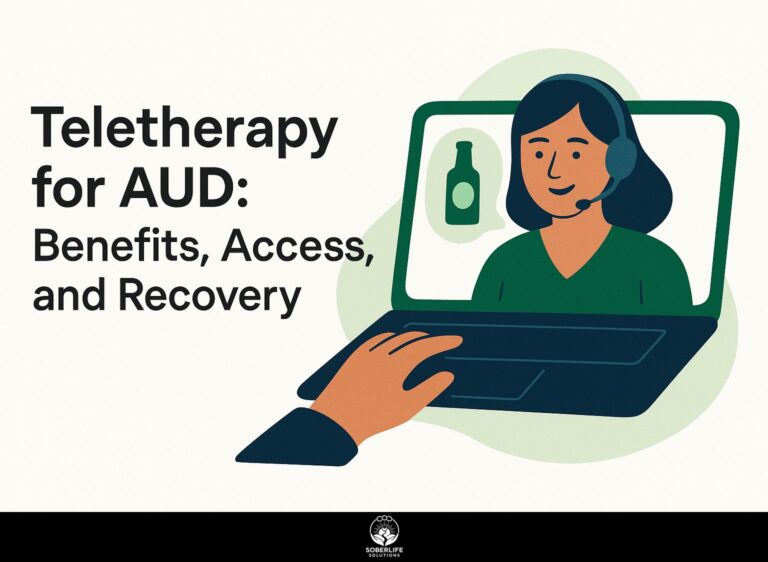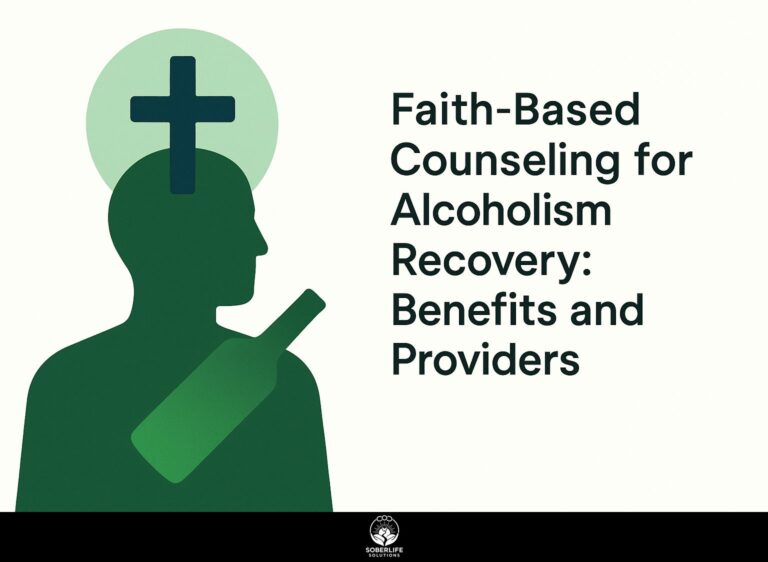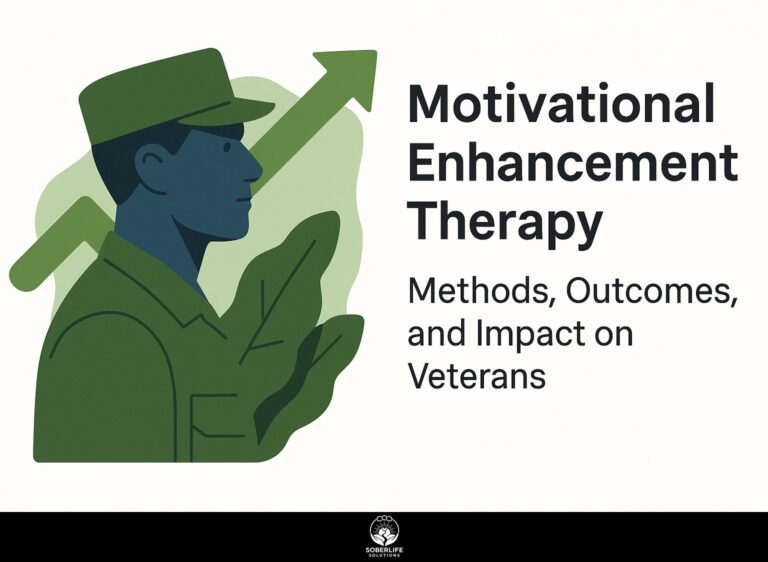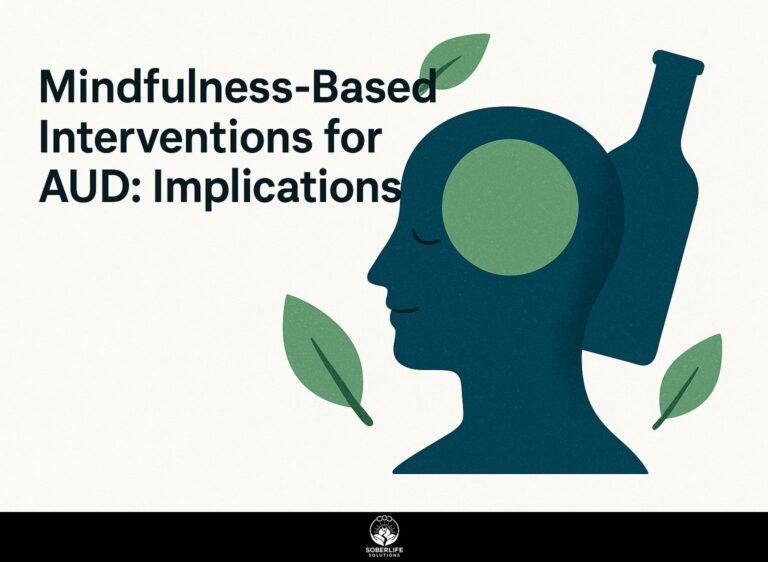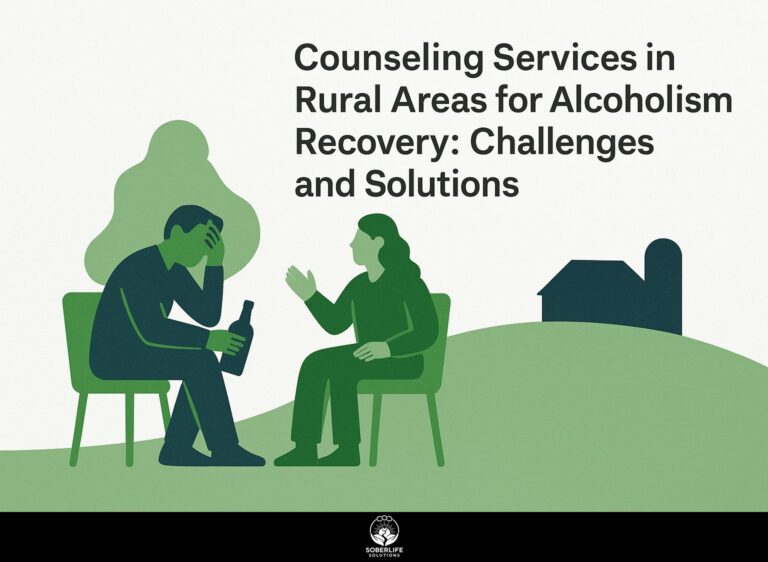CBT for Veterans: Techniques and Effectiveness
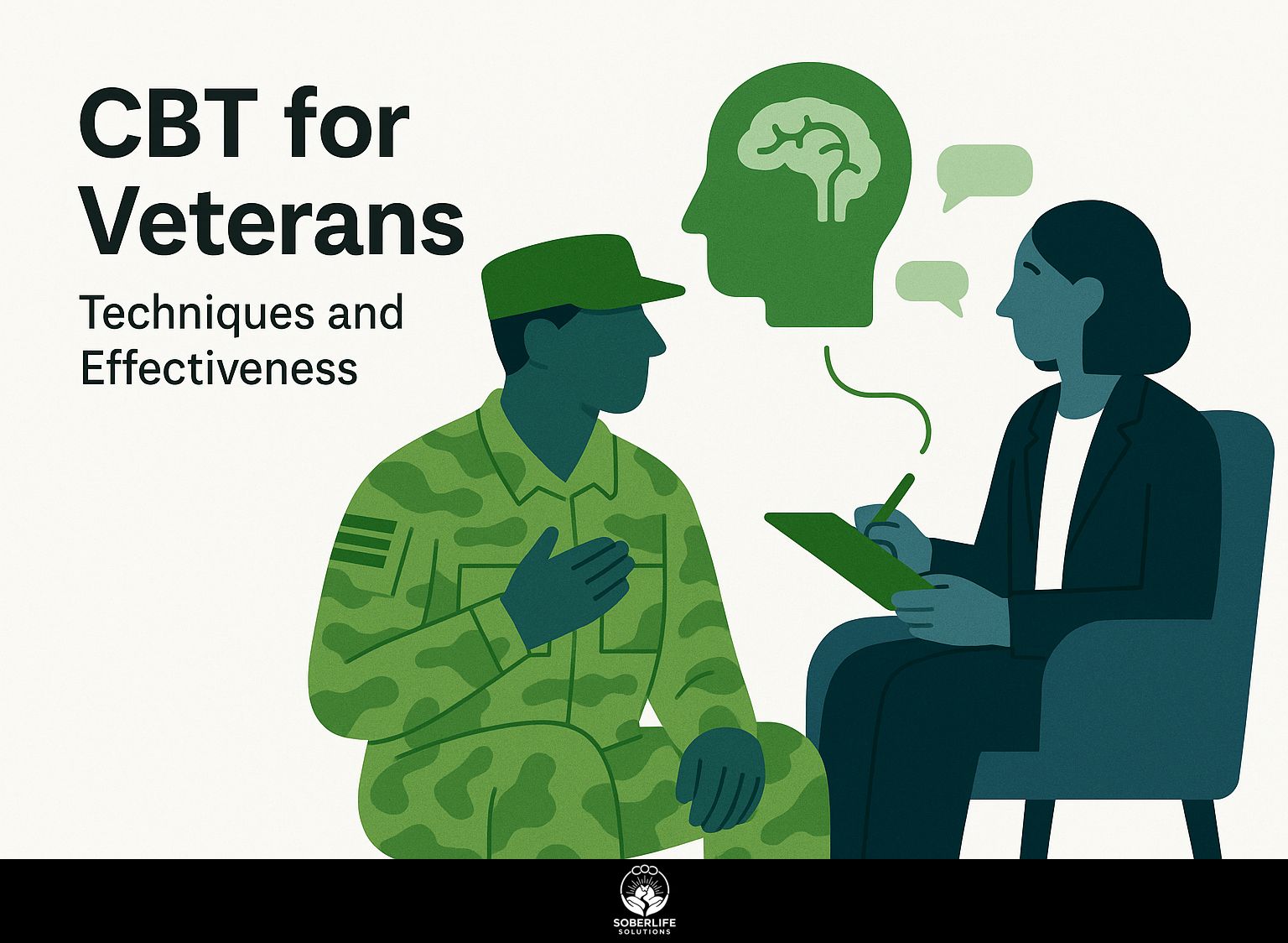
Introduction to CBT for Veterans
Cognitive behavioral therapy (CBT) is becoming an effective method for veterans dealing with posttraumatic stress disorder (PTSD). With backing from the Department of Veteran Affairs and positive results from clinical trials, CBT provides group treatment methods designed to address the specific difficulties this community encounters. In this article, we will look into effective CBT methods and their impact on veterans’ mental health, offering useful information about a way to recovery and strength.
Key Takeaways:
PTSD and Related Disorders
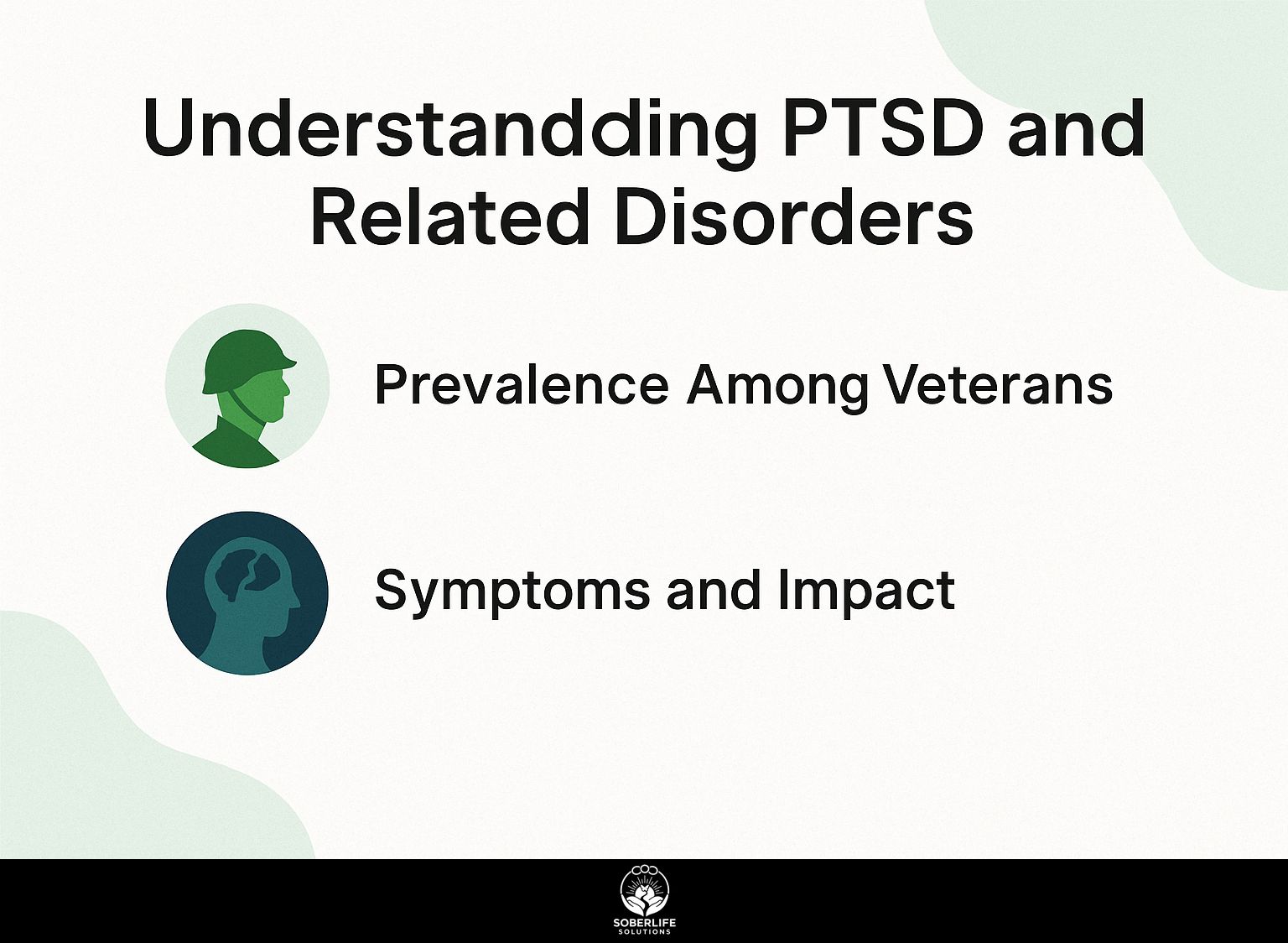
Posttraumatic Stress Disorder (PTSD) is a common problem for veterans, affecting their daily lives and mental well-being long after they have completed their service.
Prevalence Among Veterans
Studies indicate that approximately 11-20% of veterans are diagnosed with PTSD, as reported by the Department of Veteran Affairs.
This statistic shows the urgent need for mental health services designed specifically for veterans. Current resources often fall short due to bureaucratic delays and insufficient funding.
For instance, a pilot program in Texas that integrated mental health services with primary care showed a reduction in PTSD symptoms by 40% within six months. Spreading similar models nationwide could greatly improve access to care.
Increasing training for primary care physicians on PTSD can bridge gaps in early detection and treatment for veterans. According to a report from Healio, the prevalence of PTSD among US military veterans is higher than previously estimated, further highlighting the necessity for improved training and resources.
Symptoms and Impact
Veterans with PTSD have symptoms like distressing memories, feeling emotionally detached, and increased anxiety, which greatly impact their daily lives.
These symptoms can lead to difficulties in maintaining relationships, performing at work, and enjoying leisure activities.
Psychological tests like the Clinician-Administered PTSD Scale (CAPS) and the PTSD Checklist (PCL) offer a clear method to measure how severe the symptoms are. According to the American Psychological Association, these assessment instruments are critical in diagnosing and managing PTSD effectively.
Getting help early is important; participating in cognitive behavioral therapy (CBT) or receiving support from friends can significantly lessen the long-term effects of PTSD.
Following these actions aids in individual healing and creates a helpful network for veterans.
Core Principles of Cognitive Behavioral Therapy
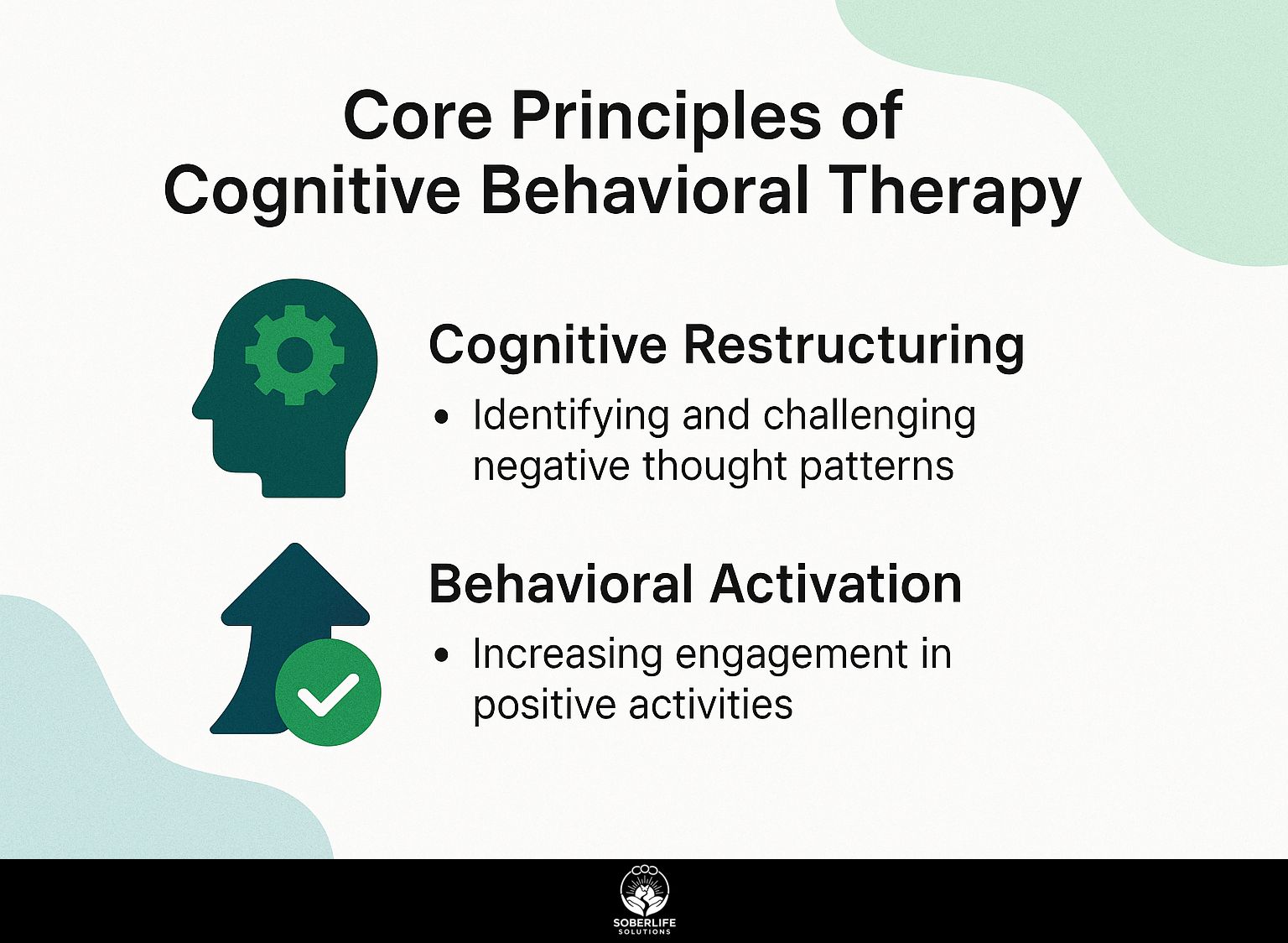
CBT is based on basic ideas that work on changing harmful thought patterns and behaviors to improve emotional health.
Cognitive Restructuring
Cognitive restructuring helps veterans recognize and question negative thought habits, leading to lessened PTSD symptoms.
One effective technique is thought recording. Veterans can keep a journal where they log distressing thoughts, categorize them, and write counterarguments. For example, if a veteran thinks, “I am a burden,” they can note reasons that contradict this belief, such as support from friends and family.
Another exercise involves guided imagery, where veterans visualize a place of safety and comfort while practicing deep breathing. Doing this regularly can help shift focus away from distressing memories, reinforcing a sense of calm and safety.
Behavioral Activation
Behavioral activation encourages veterans to engage in activities that promote positive emotions and reduce avoidance behaviors associated with PTSD.
One effective implementation strategy involves creating a weekly activity schedule. Begin by identifying enjoyable activities, such as exercise, social gatherings, or hobbies, then allocate time slots in a calendar.
Veterans should monitor their mood before and after each activity using a simple mood-tracking app, like Daylio or Moodfit, to visualize improvements. For example, a veteran might schedule a walk in the park twice a week and report feeling significantly better afterward.
Regular involvement helps reduce symptoms and builds a feeling of success and community.
CBT Techniques Specifically for Veterans
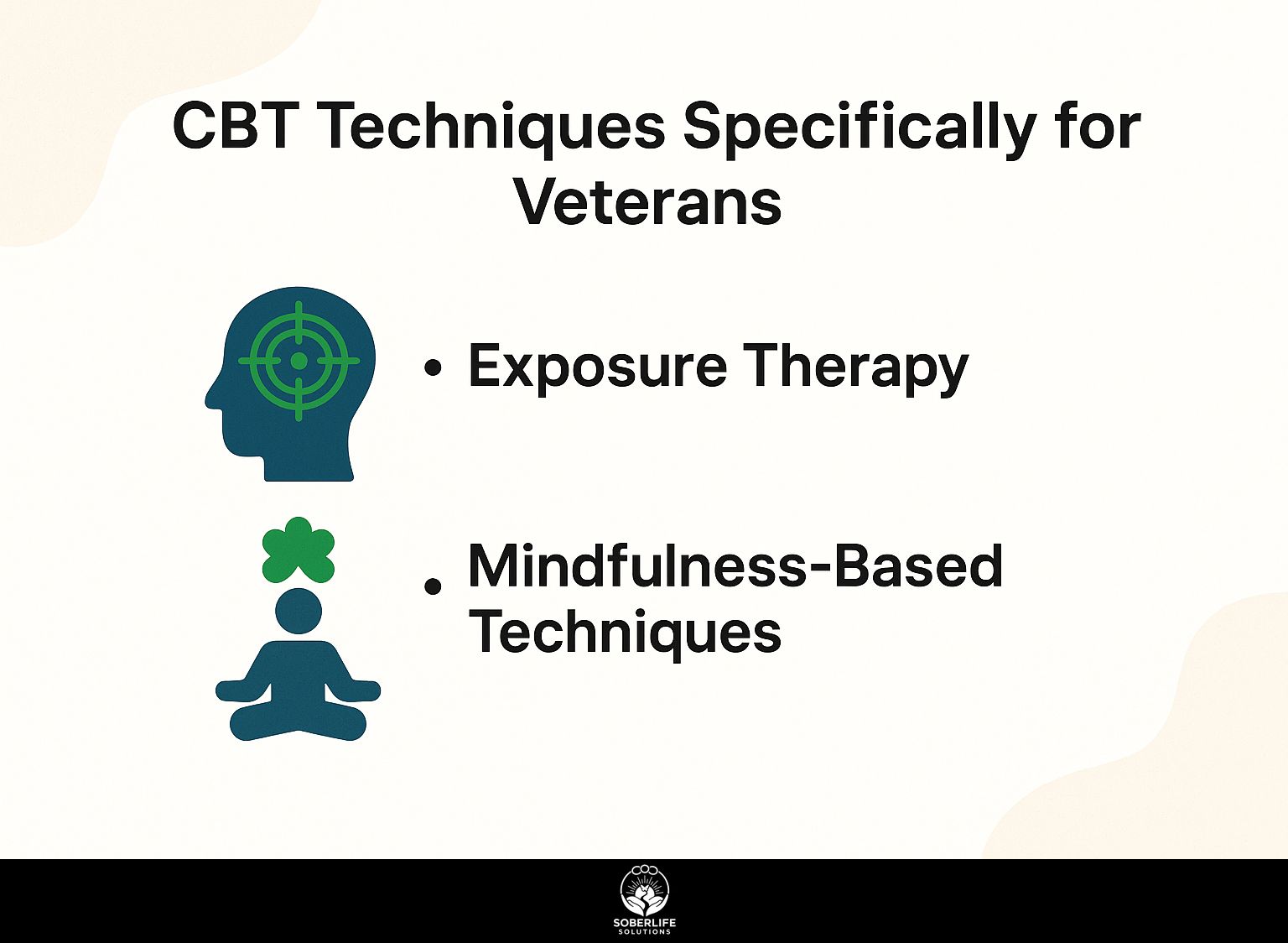
CBT methods designed for veterans effectively tackle the specific difficulties they encounter in dealing with trauma and reaching stable mental health. Worth exploring: our insights on Motivational Interviewing for Veterans with AUD, which complements CBT by addressing addiction challenges.
Exposure Therapy
Exposure therapy is a critical component of PTSD treatment, allowing veterans to confront and process traumatic memories safely.
Carrying out exposure therapy properly requires a series of well-organized steps.
- First, build a trusting relationship to make veterans feel safe and heard.
- Next, identify specific traumatic memories and use prolonged exposure techniques, where patients repeatedly recount their experiences in detail.
- Consider incorporating virtual reality (VR) as a modern tool; it immerses veterans in controlled environments to face their fears. The effectiveness of VR in exposure therapy has been explored in a study published by Nature, highlighting its potential to enhance treatment outcomes.
- Begin with short sessions, gradually increasing duration and intensity while monitoring emotional responses.
This approach helps them become stronger and feel more in control of their anxiety.
Mindfulness-Based Techniques
Mindfulness-based techniques are increasingly recognized for their efficacy in helping veterans manage PTSD symptoms through present-moment awareness.
Adding mindfulness practices such as meditation and grounding exercises to your daily schedule can greatly improve how you manage your emotions.
For example, veterans can start with a simple breathing exercise: inhale deeply for four counts, hold for four, exhale for four, and pause for four. This technique can be done anywhere and only takes a minute.
Resources like the Headspace app offer guided sessions specifically designed for veterans, providing a structured way to learn mindfulness. Practicing regularly helps you feel calm and makes your mind stronger.
Effectiveness of CBT for Veterans
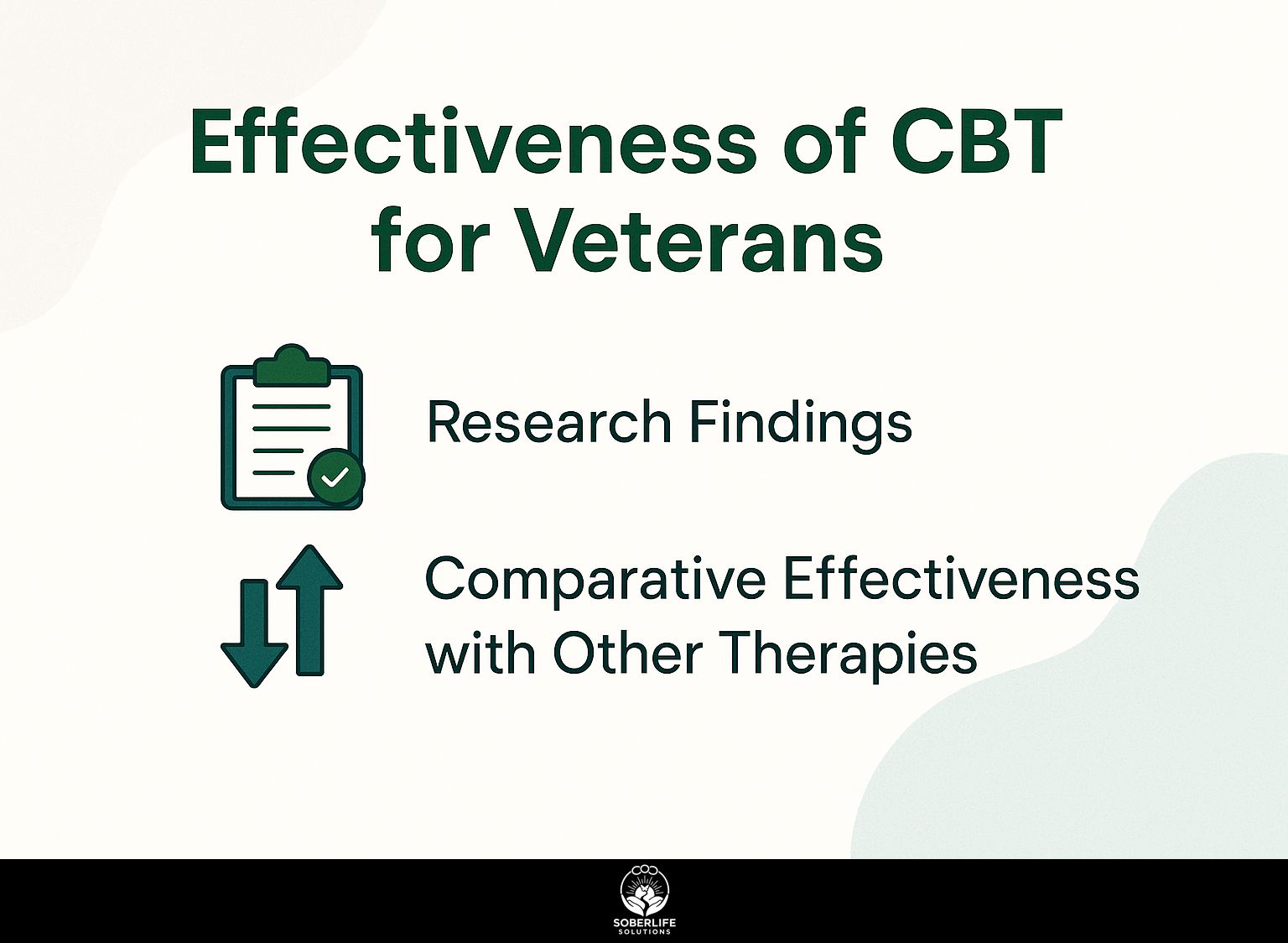
Studies repeatedly find that CBT works well for veterans dealing with PTSD, helping reduce symptoms noticeably. For those interested in complementary therapies, our exploration of Motivational Enhancement Therapy might provide additional insights into effective methods and outcomes for veterans.
Research Findings
Recent clinical trials show that Cognitive Behavioral Therapy (CBT) can lower PTSD symptoms by about 60-70% in veterans after 12-16 sessions.
This treatment has been shown to relieve symptoms and increase veterans’ commitment to their treatment.
For instance, a study demonstrated that veterans participating in CBT were 40% more likely to attend all scheduled sessions compared to those receiving medication alone.
Tools like the PTSD Coach app provide supplemental support, helping veterans track symptoms and connect with resources. Having a support system made up of friends and family improves CBT, helping people attend regularly and take part in therapy.
Comparative Effectiveness with Other Therapies
When compared to other therapeutic approaches, CBT demonstrates superior effectiveness in treating PTSD symptoms among veterans.
In studies, CBT for veterans has shown a symptom reduction rate of 60-80%, compared to 30-50% for other methods like EMDR and supportive counseling.
For example, one study found that veterans receiving CBT reported fewer flashbacks and lower anxiety levels than those who underwent EMDR.
CBT tends to have a higher treatment retention rate, with over 75% completing their sessions, unlike supportive counseling, which averages around 50%.
These statistics highlight CBT’s organized method and focus on building coping skills, which are especially effective for veterans.
Barriers to Accessing CBT
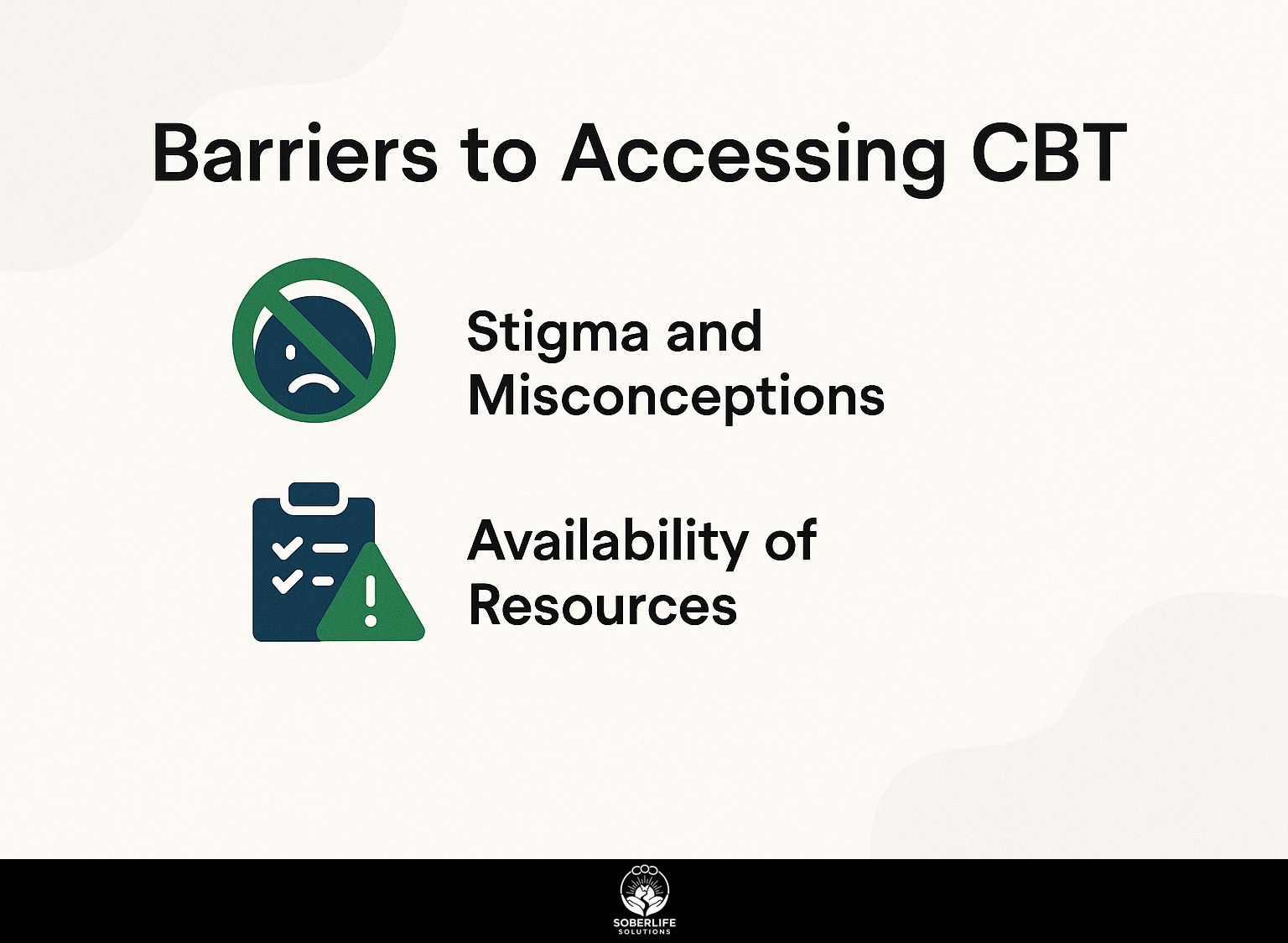
Veterans face major challenges in getting CBT, such as stigma and a lack of resources, even though it has clear benefits.
Stigma and Misconceptions
The negative views about mental health can prevent veterans from trying CBT because they worry about being judged or not understood.
To clear up these misunderstandings, supporters can share their own recovery experiences, demonstrating that asking for help takes courage.
They should actively challenge harmful stereotypes, such as the misconception that therapy is only for ‘weak’ individuals.
Resources like community workshops and webinars can educate veterans about CBT’s benefits and success rates.
Setting up helpful online forums lets veterans interact anonymously, building a feeling of acceptance and friendship.
Talking openly about mental health can reduce shame and motivate more veterans to get the support they require.
Availability of Resources
Limited availability of mental health resources and therapy options can hinder veterans’ access to necessary CBT interventions.
Veterans today have access to services offered by the VA, including virtual health appointments and community care programs that connect them to nearby healthcare providers. Many veterans face long wait times or geographic barriers.
To improve resource allocation, veterans’ organizations can partner with local therapists to expand access, incentivizing care facilities with grants or funding.
Promoting peer-led support groups can create a strong community network, easing the transition into professional therapy while addressing immediate mental health needs.
Future Directions in CBT for Veterans
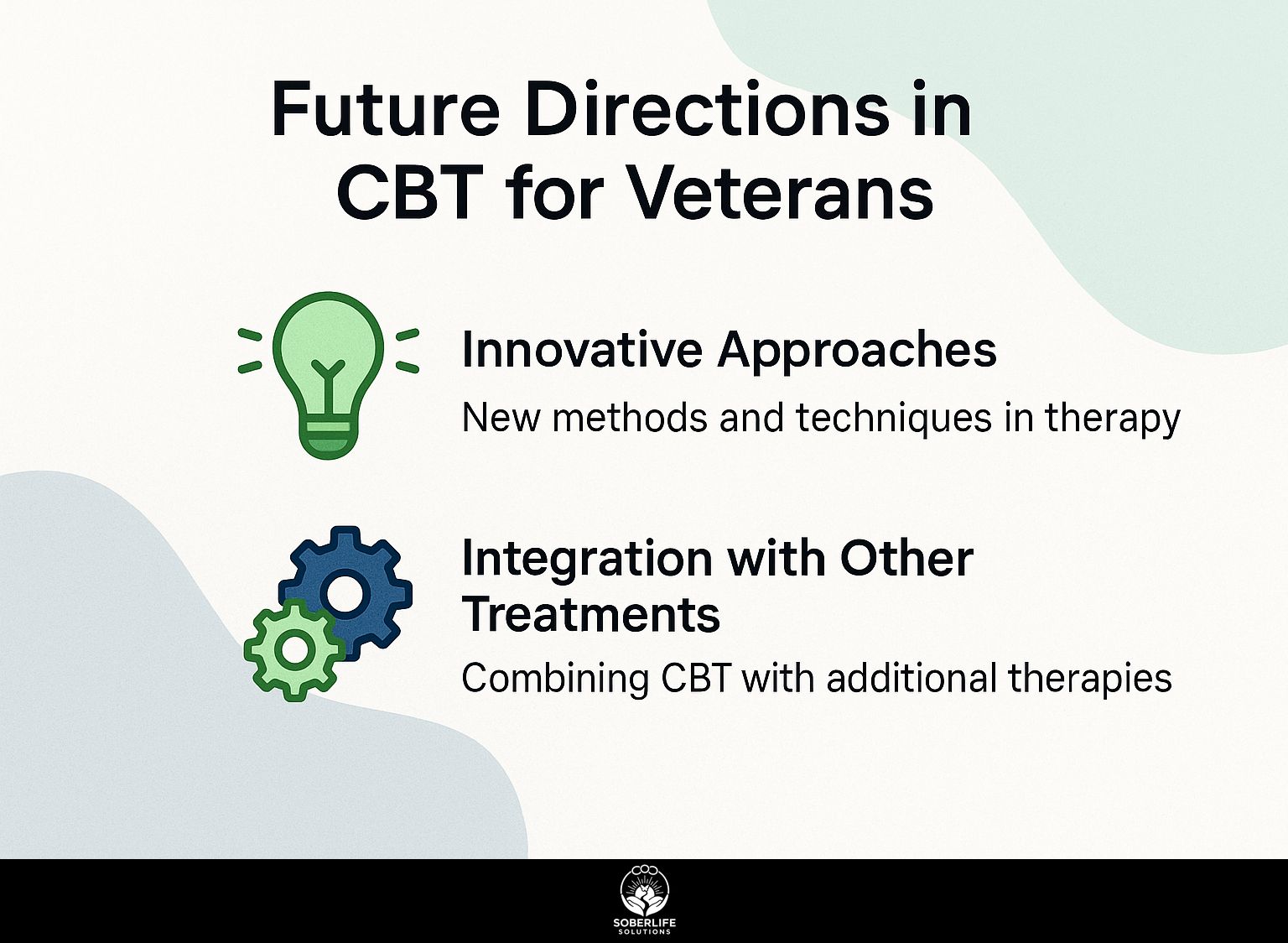
The advancement of CBT for veterans involves new methods that use technology alongside other therapies to improve treatment results.
Innovative Approaches
Emerging digital interventions, such as mobile apps and teletherapy, are reshaping how veterans access CBT and engage with their mental health.
Telehealth services like BetterHelp and Talkspace provide veterans with customized CBT sessions with licensed therapists. For example, BetterHelp’s app facilitates messaging, video, or voice calls, allowing users to communicate in their preferred format.
Apps like Woebot offer AI-powered CBT tools to help with anxiety and depression through chat-based interactions. Successful implementations, such as the Veterans Affairs’ tele-mental health program, have shown increased engagement and treatment adherence, highlighting the potential of these digital solutions to improve mental health outcomes for veterans.
Integration with Other Treatments
Combining CBT with other types of therapy can improve how well the treatment works and meet the different needs of veterans.
By using CBT along with medicine management, practitioners can tackle biological causes while concentrating on changing thought patterns. For instance, using SSRIs alongside CBT techniques may lead to improved outcomes for depression and anxiety.
Incorporating group therapy offers veterans a supportive environment where they can share experiences and reinforce learned cognitive skills among peers. Trauma-focused treatments, like EMDR, can be combined to offer a complete method for recovering from trauma.
This integration helps offer care customized to the unique needs of veterans in an effective way.
Frequently Asked Questions
What is CBT for Veterans and how does it work?
CBT for Veterans, or Cognitive Behavioral Therapy, is a form of psychotherapy that focuses on identifying and changing negative thought patterns and behaviors. It works by helping individuals recognize and challenge their thoughts, feelings, and behaviors, and teaches them coping skills to manage difficult situations.
What are some specific techniques used in CBT for Veterans?
Some techniques commonly used in CBT for Veterans include cognitive restructuring, exposure therapy, and relaxation techniques. Cognitive restructuring involves identifying and challenging negative thoughts and replacing them with more positive and realistic ones. Exposure therapy helps individuals gradually confront their fears or traumatic memories in a safe and controlled environment. Relaxation techniques, such as deep breathing and visualization, can help calm the mind and body during times of stress.
Is CBT effective for treating PTSD in Veterans?
Yes, CBT has been found to be an effective treatment for PTSD in Veterans. Studies have shown that CBT can help reduce symptoms of PTSD, including anxiety, depression, and anger, and improve overall quality of life. It can also help Veterans develop skills to manage and cope with PTSD symptoms in the long-term.
Are there any potential drawbacks to using CBT for Veterans?
Although CBT works well for many people, it might not be suitable for everyone. Some Veterans may find it difficult to open up and talk about their experiences, and may benefit more from other forms of therapy, such as group therapy or medication. It is important for Veterans to work with a mental health professional to find the best treatment plan for their specific needs.
Can CBT for Veterans be done remotely or does it require in-person sessions?
CBT for Veterans can be done both remotely and in-person, depending on the preferences and needs of the individual. Veterans can now have many therapy meetings online, making it possible to get care while staying at home. However, some Veterans might choose face-to-face meetings because they offer a more individualized and engaging experience.
How long does CBT for Veterans typically last?
The length of CBT for Veterans can vary depending on the individual and their specific needs. Some individuals may see improvements in a few sessions, while others may require longer-term treatment. On average, CBT sessions can last between 12-16 weeks, with weekly or bi-weekly sessions. It is important for Veterans to work closely with their therapist to determine the best length and frequency of treatment.

